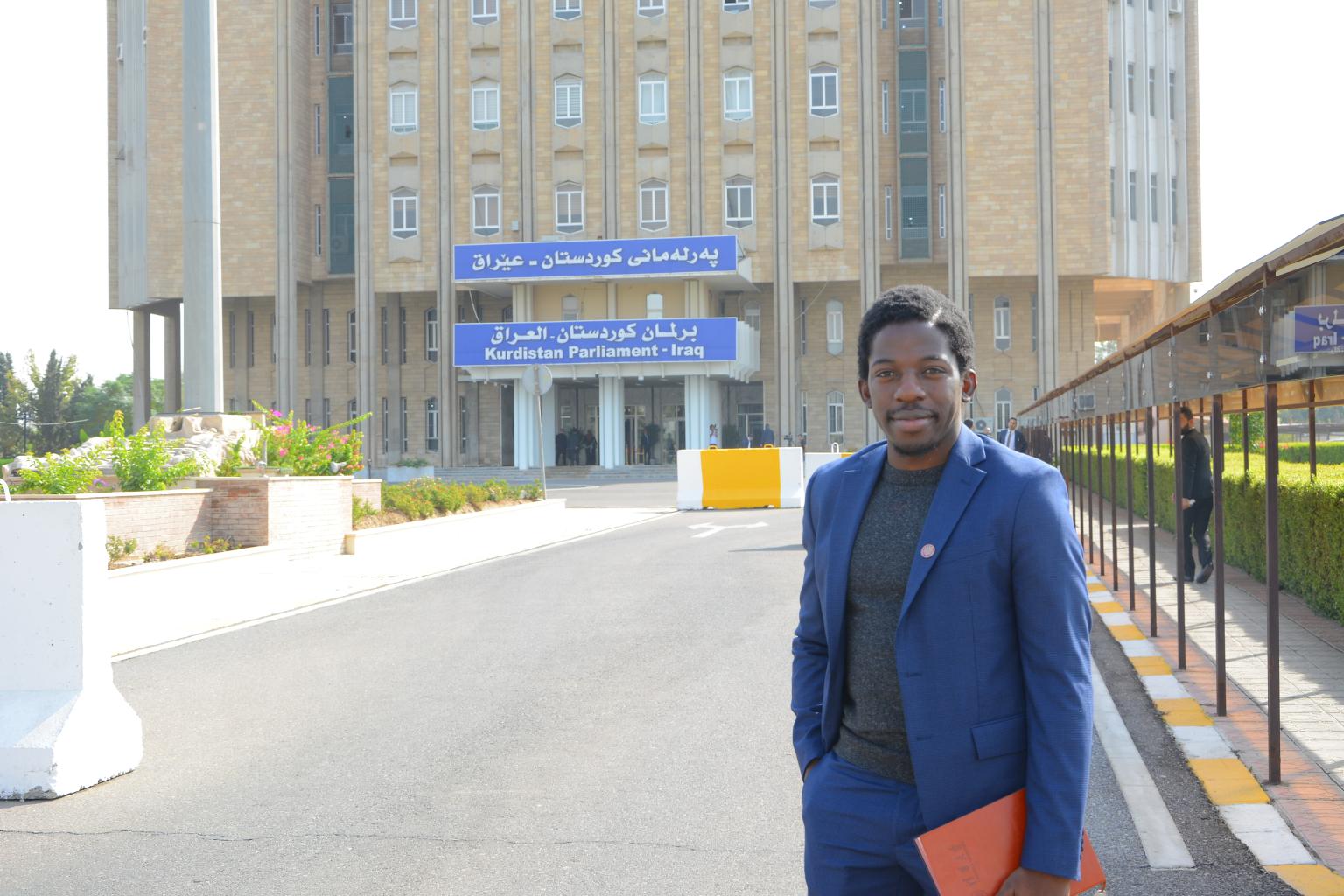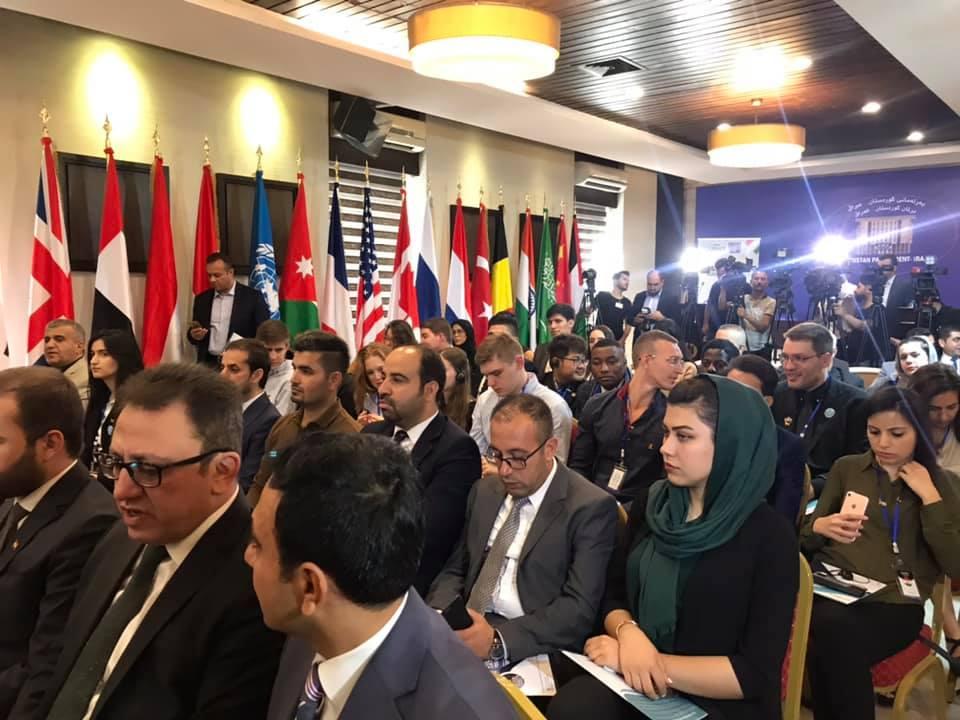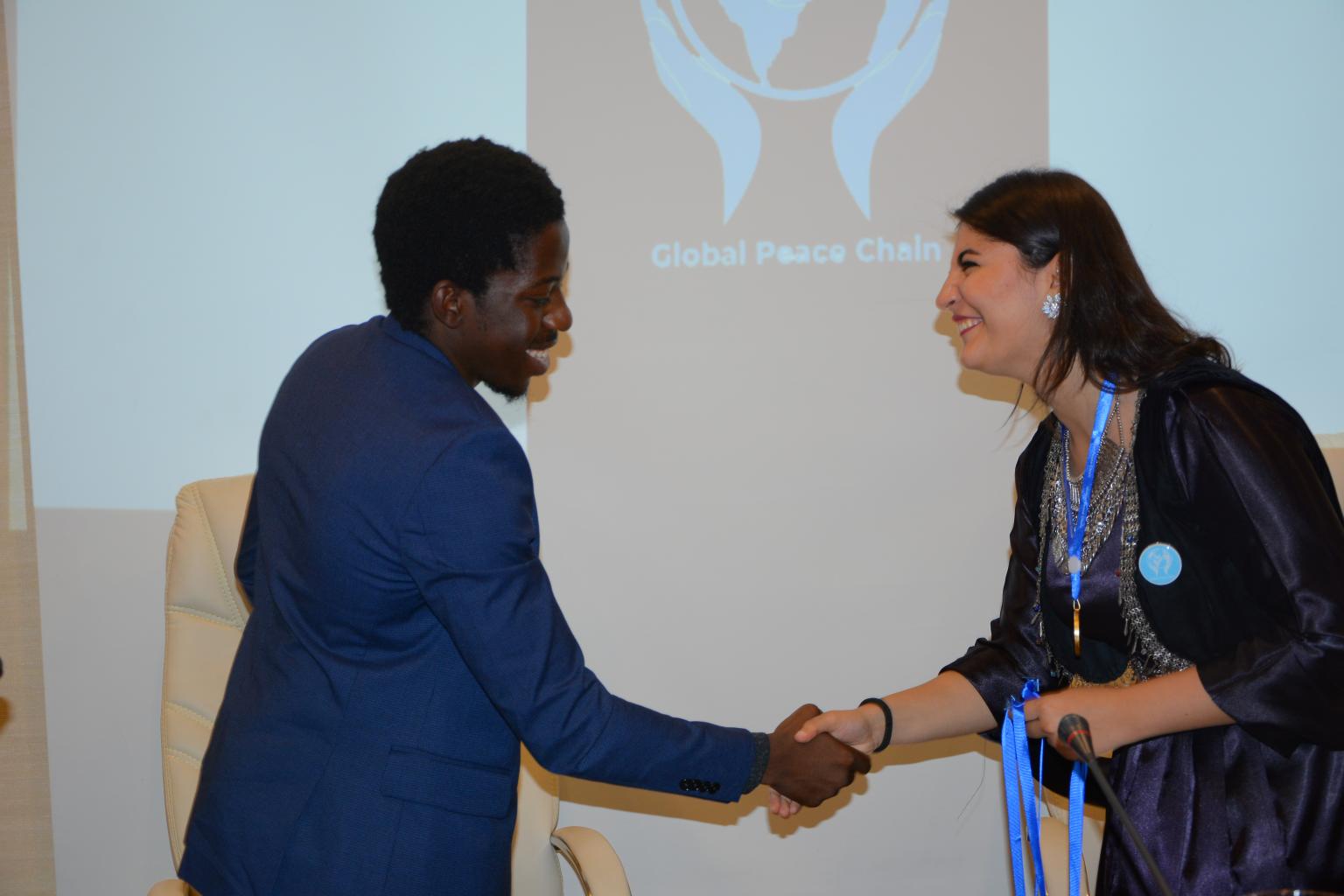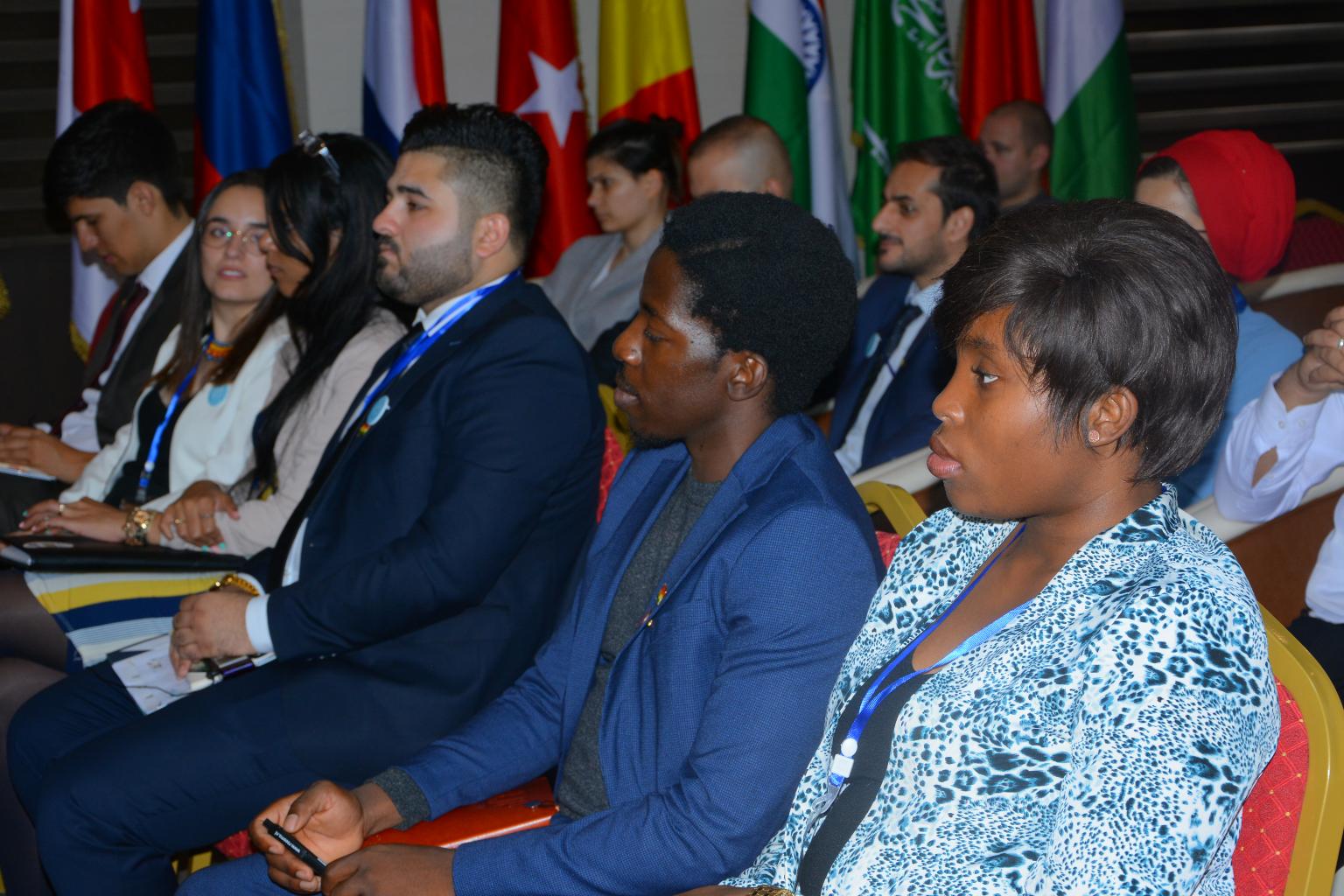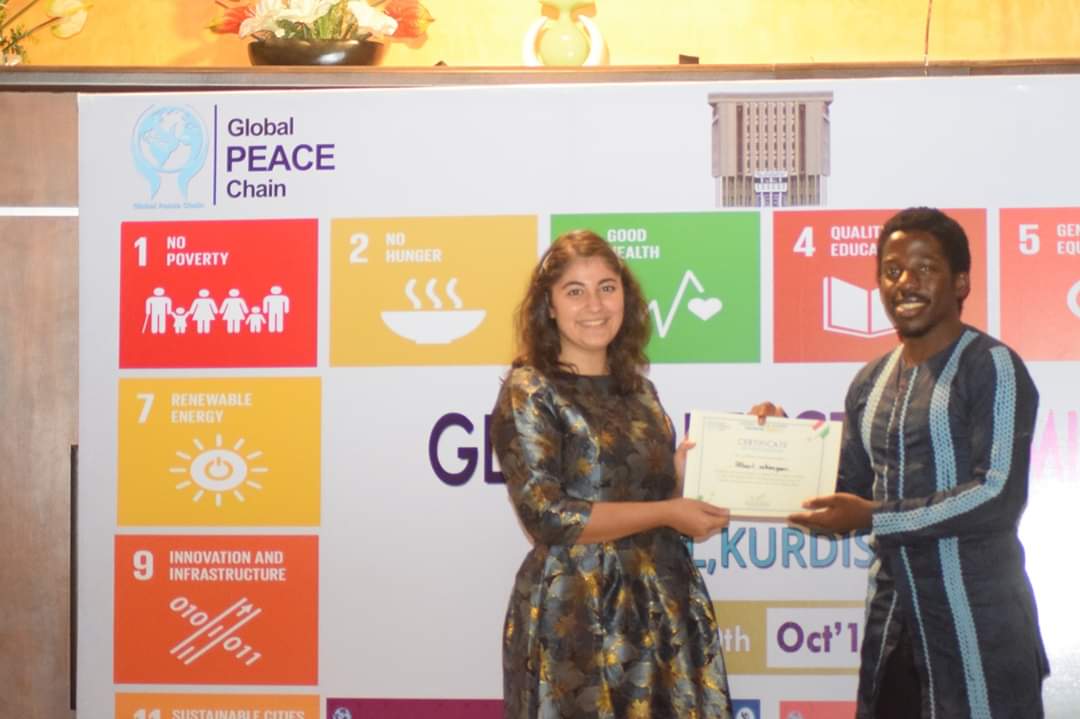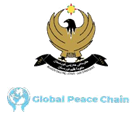
Date: 11 October 2019
Name: Albert Mhangami
Chinese Name: 乌俊杰
Student No. 2019280780
Supervisor: Tang Xiaoyang
Department of International Relations
Program: Chinese Politics Foreign Policy and International Relations (CPFP) Tsinghua University
Global Peace Summit Kurdistan- Report
October 9 2019 – October 10 2019
Parliament House, Erbil, Iraq
I was selected as a delegate for the Global Peace Summit Kurdistan from 9 October 2019 to 10 October 2019. Additionally, I was honored with nomination and selection as a panelist for the Global Peace Summit Kurdistan Young Leaders for Peace Building Panel conducted on 9 October 2019. I left Beijing, China on October 7th and arrived in the late evening hours of October 8th in Erbil Iraq. Upon my arrival I immediately was engaged in preparations for my speaking engagement the next day. After breakfast myself and the other delegates were escorted to the Panel which was held in the Parliament House, Erbil, Iraq in the presence of his excellency the Vice-President of Kurdish Parliament Mr. Herman Hawramy, and representatives from the Kurdistan Region's presidency, the Parliament, and ministries. The government gave speeches on the history and current work of Kurdistan in peace building and provided a warm welcome to all the foreign delegates and officials. After a few more formalities the panel commenced. The panel was chaired by the President of the Global Peace Chain, Mr. Muhammad Ahmad. My fellow panelists included Mr. Illimani Patiño from Columbia, and Mr. Zain Awan from the United Kingdom. Mr. Awan is the Growth and Operations Manager for Re: Coded an innovative tech-for-good startup, simultaneously taking on the global technical skills gap and integrating refugees and vulnerable youth into the labour market. Before joining Re:Coded, Mr. Awan served as the youngest serving director of the British Youth Council in its 60 years, where he implemented specialist programs and partnerships including a nationwide campaign for education advocacy in Pakistan. Mr. Awan has also worked as a marketing and communications consultant to the Department for Communities and Local Government (UK), served as the Director of Marketing for a Y.C. backed tech start-up and established an innovation department for one of the fastest growing NGOs in the UK. Mr. Patiño is a political scientist at the Pontifical Bolivarian University with studies in International Relations from the Metropolitan University Prague in the Czech Republic. He specializes in Economic Policy and Global Conflicts. He has made academic and cultural visits to 45 countries, including Kurdistan, Palestine, South Ossetia and Kosovo. He has served as an associate investigator to the Andean Parliament. He is currently journalists of The Bogotá Post and is based in Germany.
The panelists were asked respective questions on peace frameworks. Of note in regard to the questions directed to Mr. Awan was the question “how young people could be engaged to advocate peace in their community?”. Mr. Awan responded with three strategies. The first was an emphasis on having young people at the table for peace dialogue. He argued that “young people are not the leaders of tomorrow but rather the leaders of today”. The basis for his argument revolved around the idea of multi-stakeholder inclusion in peace dialogues. Secondly, Mr. Awan turned his attention to international dynamics of inequality of access. He discussed how the intersection between conflict resolution and interests that are weighed in these conversations often revealed limited demographics and privileged seats. Including not just youth, but those youth who are affected by violence in peace mechanisms, according to Mr. Awan, was crucial. In line with this he argued that the contexts in which conflict was experienced was the main consideration for peace building. This led to his final strategy which argued that the idea of peace and conflict cannot be separated from history, particularly colonialism. The nature of conflict especially military conflict in most regions could not be separated from western imperialism, neoliberalism, and destabilization tactics and consequently could only be unraveled with a simultaneous addressing of post-colonial problems. In regard to Mr. Patiño, his response to the question of “why are the youth more prone to violence and how can this be addressed” was particularly interesting. Mr. Patiño spoke primarily about violence among Columbian youth. He emphasized the role of youth at the forefront of political revolutions
and consequently the historical culture of youth at the forefront of political violence. To address this problem Mr. Patiño stressed a collective mentality that echoed the inclusiveness argued by Mr. Awan. If the rules and benefits of society are applied to all members of society as justly as possible then the political motivation for violence is lowered among the youth. The youth have a duty to fight against oppression he added. In whatever form it came oppression would always be met with resistance. Some violence displayed by the youth reflected limited access to justice mechanisms or relief of oppression, but some reflected intolerance. Encouraging of tolerance of other faiths, beliefs, and self-expression was argued as crucial to a de-escalation of youth violence. Mr. Patiño, however, emphasized that conflict will always be present and in fact conflict was bound to the human experience. It is therefore not the goal of peace to prevent conflict but limit its expressions.
The main question addressed to my seat was “What is the most significant obstacle to attain peace in your community?”. To answer this question, I began by explaining that I belonged to three communities; a Zimbabwean community, a European community, and most recently a Chinese community. All three communities have different understandings of peace and yet have a similar main obstacle. Zimbabwe, like most Sub-Saharan communities, views peace as a concept that is related to the ability to engage in society and opportunities unimpeded and without the fear of undue aggression or violence. This violence could be both physical or otherwise. In the West peace is primarily seen as an ethereal state of being, a psychological pleasant disposition despite real life challenges. And in China, I emphasized the Confucian ideals of peace that functioned under the concept of harmony and is expressed in diverse ways along generations and regions in the Greater China context. What provided a stumbling block for these three communities was interestingly similar. With my current studies in the Chinese Politics Foreign Policy and International Relations Masters including a course in Conflict Resolution, I placed particular emphasis on Asst. Prof. She Gangzheng of Tsinghua University’s Department of International Relations syllabus in the course. Starting with the ideas of international peace. I contrasted Schumpeter’s liberal pacifism, with Kant and Michael W. Doyle’s International Liberalism. I argued that for most of the assembly present, the idea of international liberalism was tempting, and nominating lack of democracy, or liberalism as being a major stumbling block for peace. However, I argued that by its own confession, international liberalism perpetuated an idea of war and conflict with non-liberal states which could be problematic. For the tempting argument of military power as being a stumbling block, I drew attention to China’s interesting balance of massive military prowess, which only comes second to the United States, versus China’s non-intervention international policy. Peace was not contradictory to military prowess. I then drew attention to a concept available in Confucianism, Western Existential philosophy, and Pan-African political philosophy. This concept was the idea of humanity as a global entity. With most nations, communities, and families placing particular emphasis on their survival as a separate concept from the survival of the greater human experience, the idea of peace contradicted the idea of self-betterment. Consequently, peace found a major stumbling block in the idea of community, and how communities are practically addressed in contention with the rest of humanity. Pressed for time I concluded that such a stumbling block had yet to find a satisfactory solution and recommended Henry A. Kissinger’s “Domestic Structure and Foreign Policy” and Michael W. Doyle’s “Liberalism and World Politics” for those who were interested in exploring the concepts more.
After the Panel panelists and delegates engaged with the media and were interviewed by Iraqi press and organizations. In this regard I spoke from the seat of a scholar of Tsinghua University and consequently provided information inline with policy and expectations of my department. After interviews and a lunch
break a second panel on Women and Peace Building was held. The panel engaged multifaceted questions on the unique burdens of conflict and gender dynamics. The delegates ranged from professionals from the Netherlands, German academics, Jordanian peace workers, and UAE consultants. After the panel and Parliament meeting was adjourned, we were given a tour of the historic citadel of Erbil Kurdistan. On the 10th of October the delegates attended the SDG workshop on Peace and Climate Change. I along with delegates from Russia, Iraq, and Iraqi Kurdistan provided a presentation on the effects on climate change, the potential world of 2050 if these effects are not addressed, and solutions to these problems; respectively. Once the workshop was concluded, we once again engaged the press and were subject to a photo session. On completion of the workshop and photo session the delegates were given a tour of Erbil Kurdistan. On October 11th a tour of the Sulaymaniyah Iraq was made available, however, with the formal sessions complete and two days required for my travel to return to Beijing in time for my classes, I could not attend and instead boarded my plane from Erbil on October 11th and returned to Beijing on October 12th. For my work and participation, I was awarded a Global Peace Ambassador medal by Global Peace Chain, as well as a certificate of participation.
